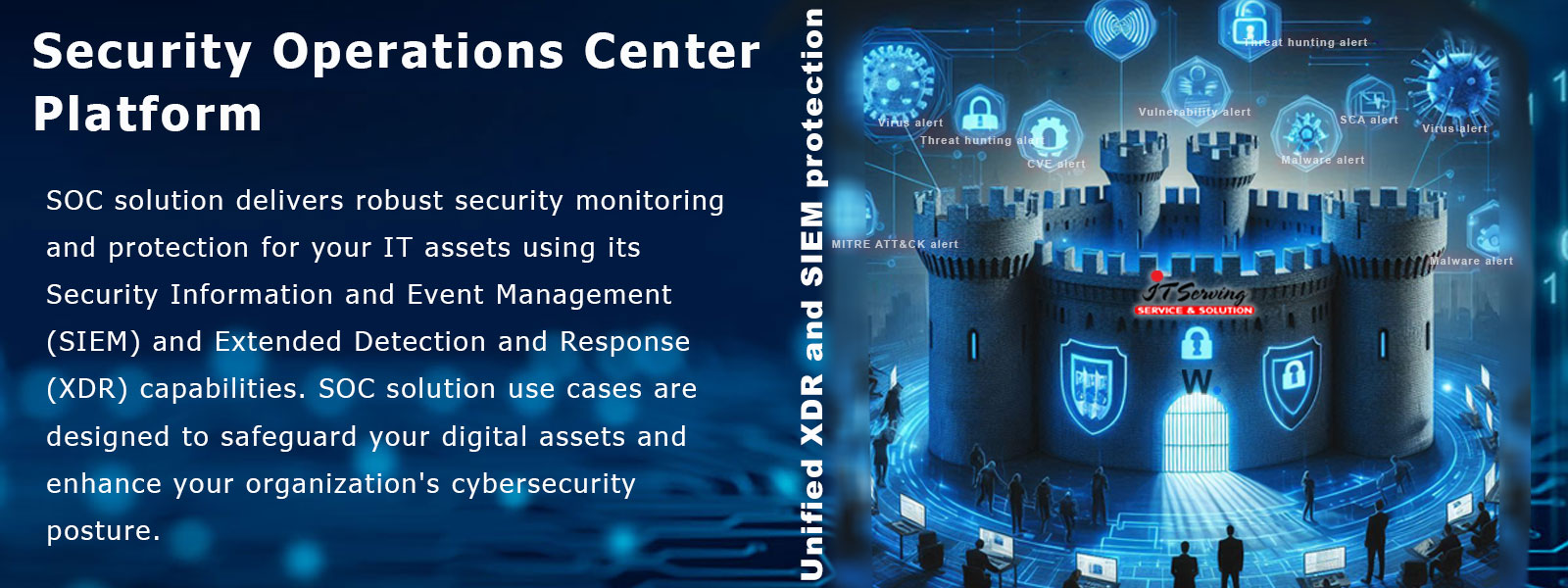
An information security operations center (ISOC or SOC) is a facility where enterprise information systems (web sites, applications, databases, data centers and servers, networks, desktops and other endpoints) are monitored, assessed, and defended.
A SOC is related to the people, processes and technologies that provide situational awareness through the detection, containment, and remediation of IT threats in order to manage and enhance an organization's security posture. A SOC will handle, on behalf of an institution or company, any threatening IT incident, and will ensure that it is properly identified, analyzed, communicated, investigated and reported. The SOC also monitors applications to identify a possible cyber-attack or intrusion (event), and determines if it is a genuine malicious threat (incident), and if it could affect business.
A security operations center (SOC) can also be called a security defense center (SDC), security analytics center (SAC), network security operations center (NSOC), security intelligence center, cyber security center, threat defense center, security intelligence and operations center (SIOC). In the Canadian Federal Government the term, infrastructure protection center (IPC), is used to describe a SOC.
Regulatory requirements
Establishing and operating a SOC is expensive and difficult; organisations should need a good reason to do it. This may include:
- Protecting sensitive data
- Complying with industry rules such as: GDPR, PCI DSS, NIST, HIPAA, TSC.
- Threat hunting
- Vulnerability detection
- And more than that... It depends on SOC solution and supporting teams.
Cyber Security Technology
SOCs typically are based around a security information and event management (SIEM) system which aggregates and correlates data from security feeds such as network discovery and vulnerability assessment systems; an extended detection and response platform provides a comprehensive security solution that detects, analyzes, and responds to threats across multiple IT infrastructure layers; governance, risk and compliance (GRC) systems; web site assessment and monitoring systems, application and database scanners; penetration testing tools; intrusion detection systems (IDS); intrusion prevention system (IPS); log management systems; network behavior analysis and Cyber threat intelligence; wireless intrusion prevention system; firewalls, enterprise antivirus and unified threat management (UTM). The SIEM technology creates a "single pane of glass" for the security analysts to monitor the enterprise.
A SOC Should Have What?
A security operations center (SOC) should have platforms:
Fully Solution & Service Supports from us
A Security Operations Center (SOC) is a centralized unit that focuses on improving an organization's cybersecurity posture by monitoring, detecting, analyzing, and responding to security incidents in real-time. The SOC team, which can be in-house or outsourced, is responsible for safeguarding the organization's IT infrastructure, including networks, systems, and applications.
Key functions of a SOC include:
By coordinating these activities, a SOC helps organizations maintain a proactive defense against cyber threats and improve their overall security posture.
ITServing® team always available for helps and supports yor business with reasonable costs and saving from 60% - 80% budgets.
